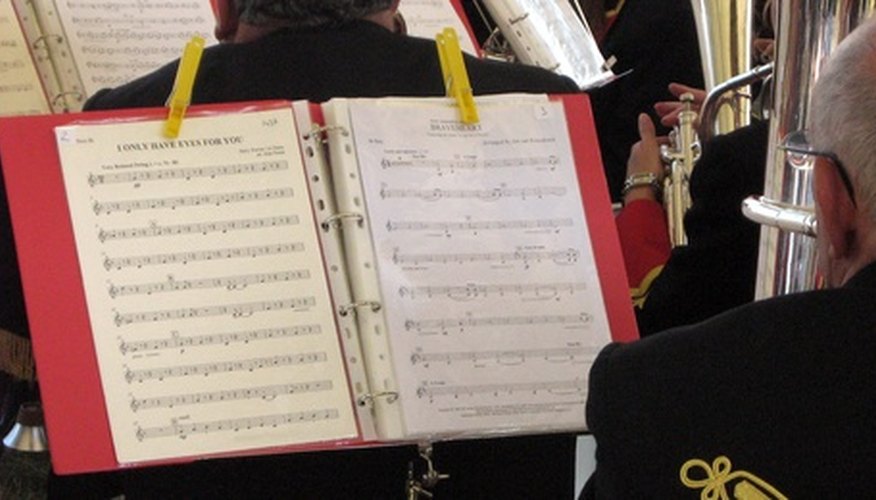The most popular metronome features a weighted metal pendulum that swings back and forth, creating a tick-tock sound for a musician to follow. The weight can be moved up or down to adjust the tempo of the swinging pendulum, depending on the beats per minute (BPM) of the musical piece in question. The Wittner classic metronome uses a solid spring mechanism, which is wound by a key to produce the clicking sound of the tempo. Fixing this metronome typically involves lubricating the spring mechanism or balancing the metronome if the pendulum does not swing evenly.
- The most popular metronome features a weighted metal pendulum that swings back and forth, creating a tick-tock sound for a musician to follow.
- The Wittner classic metronome uses a solid spring mechanism, which is wound by a key to produce the clicking sound of the tempo.
Turn the metronome upside down so that the bottom is facing toward you. Push aside the small bracket that keeps the panel to the bottom sealed. Place the head of the screwdriver into the side of the panel and gently pry the panel open. You can now see the gears and the large static weight attached to the bottom of the pendulum.
Coat the gears with a small amount of WD40 (or similar lubricant). Spray the lubricant where the winding mechanism is connected to the gears.
Wind the metronome slowly, while observing the gears. The WD40 should be enough to loosen sticky parts that are keeping the pendulum from swinging. If the metronome does not wind easily right away, wait a few minutes for the lubricant to seep into the parts. If the gears still don't move --- or if they are obviously broken --- you will have to replace the entire mechanism. If all is working, replace the panel.
- Coat the gears with a small amount of WD40 (or similar lubricant).
- If the metronome does not wind easily right away, wait a few minutes for the lubricant to seep into the parts.
Place the metronome on a flat surface.
Turn the winding mechanism clockwise four or five times (do not overwind).
Release the pendulum from the tab at the top of the metronome (this tab keeps the pendulum from swinging). Set the tempo weight within the range of 208 to 192 ("presto," meaning speedy) beats per minute. If the pendulum is not swinging (and the mechanics are indeed working), put a piece of paper under one side of the metronome; adjust the thickness of the paper by folding it over until the metronome is balanced and the pendulum is swinging evenly.
TIP
Take your metronome to a watch or clock shop to have the gears replaced. Watches and clocks operate on virtually the same principle as a metronome. If the weight attached to the pendulum will not stay in place, tighten the two Phillips-head screws on each side of the weight --- but not too tight. The weight needs to comfortably slide up and down the pendulum. The metal flap in the centre of the weight keeps it held in place on the pendulum.
WARNING
Do not overwind the metronome; doing so will break the spring mechanism. Unless you are skilled in precision mechanics --- such as a watchmaker --- it is advisable not to take apart the metronome gears in an effort to replace or repair them. Replacement parts for the Wittner classic metronome are relatively affordable, and a professional can typically replace the entire spring mechanism in a short amount of time.
